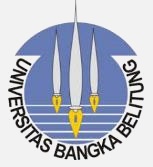Gender Bias Analysis And Right To Fight For Gender Equality In Education Through The Children's Book “I Am Kartini”
DOI:
https://doi.org/10.33019/berumpun.v6i2.114Keywords:
Equivalence, language style, meaningAbstract
This study employs visual discourse analysis to reveal the visual elements within the children's book "I AM KARTINI." Its primary objective is to assess how the book conveys the interplay between gender and the pursuit of gender equality, particularly concerning education. The analysis reveals a both the promotion of Gender Equality and the presence of Gender Inequality. "I AM KARTINI" strongly advocates for Gender Equality, emphasizing the critical importance of granting women equal access to education. The book communicates the idea that numerous women recognize education's pivotal role in their lives and society as a whole, championing women's inherent right to the same opportunities enjoyed by men. However, the analysis also uncovers instances of Gender Inequality depicted in the book, connecting patriarchal culture within the Indonesian educational system. The book portrays stereotypes that restrict women to domestic roles, primarily centered on family and household responsibilities. This research highlights the critical importance of examining how gender is represented in children's literature. "I AM KARTINI" serves as a powerful instrument in this endeavor, advocating for gender equality while also highlighting the ongoing challenges related to gender bias and inequality within the Indonesian educational landscape. These findings emphasise the urgent need to recognize and address these issues to foster an inclusive educational environment where every individual has an equal opportunity to thrive.
Downloads
References
Adam, H., & Barratt-Pugh. (2020). The challenge of monoculturalism: What books are educators sharing with children and what messages do they send? Australian Educational Researcher. https://link.springer.com/article/10.1007%2Fs13384-019-00350-2. Accessed 20 Feb 2021.
Adam, H., Barratt-Pugh, C. & Haig, Y. (2019). “Portray cultures other than ours”: How children’s literature is being used to support the diversity goals of the Australian early years learning framework.
Auliah, N.D & Misarah, I. (2023). An Analysis of Gender Bias in Bilingual Thematic Children’s Picture Storybooks. Journal of English for Specific Purposes in Indonesia.Vol. 2, No. 2 Australian educational researcher. https://rdcu.be/bhMgn. Accessed 20 Feb 2021.
Berry, T & Wilkins, J.(2017) The Gendered Portrayal of Inanimate Characters in Children’s Books. Journal of children's literature. VOL 43, No 2.
Bujuri, D.A. (2018). Analisis Perkembangan Kognitif Anak Usia Dasar dan Implikasinya dalam Kegiatan Belajar Mengajar. Literasi : Jurnal Ilmu Pendidikan. Vol 9, No 1. http://dx.doi.org/10.21927/literasi.2018.9(1).37-50.
DiPrete, T. A., & Buchmann, C. (2013). The rise of women: The growing gender gap in education and what it means for American schools. New York, NY: Russell Sage Foundation.
Fithriani, R. (2022). Gender Portrayals in Indonesian and International English Language Textbooks for Primary Students A Critical Image Analysis. MEXTESOL Journal. Vol 46, No 4.
Fithriani, R. (2022). Gender Stereotypes In Educational Texts : A Comparative Study Of Indonesian and International Primary English Textbooks. Discourse and Interaction. Vol 15, No 2.
Gora. (2015). “Representasi Feminisme Dalam Karya Sastra (Kajian Semiotika Sosial Novel ‘Eks Parasit Lajang’ Karya Ayu Utami.” Jurnal Cakrawala.
Goyal, R., & Rose, H. (2020). Stilettoed Damsels in Distress: The (un)changing depictions of gender in a business English textbook. Linguistics and Education, 58(3), 1-9. https://doi.org/10.1016/j.linged.2020.100820.
Lagarde, C., (2013), “Dare the Difference,” Finance & Development (June), International Monetary Fund.
Mashiri, L. (2013). Conceptualization of Gender Based Violence in Zimbabwe, International Journal of Humanities and Social Science, 3, (15), 94-103.
Messiou, K. (2013). Melibatkan suara siswa: menggunakan kerangka kerja untuk mengatasi marginalisasi di sekolah. Pendeta Selidiki. Mendidik. 11, 86–96.
Mihira, L. S. N., Suwastini, N. K. A., Artini, N.N., Jayantini, I G. S. A. R. & Budiarta, I W.(2021). Gender Inequality Represented in English Textbooks: A Literature Review. Jurnal Ilmu Sosial dan Humaniora.
Naurah, N.Z & Siregar , R.K.(2023). Wacana Kesetaraan Gender dalam Keluarga pada Film Nanti Kita Cerita tentang Hari Ini : Analisis Wacana Kritis Norman Fairclough (Discourse in Gender Equality in the Family in the Film 'Nanti Kita Cerita tentang Hari Ini': Critical Discourse Analysis of Norman Fairclough). Jurnal Humaniora dan Ilmu Pendidikan(Jahidik). Vol 3. No 1
Nurjannah, A.A & Sulistyorini, D.(2019). Perjuangan Kesetaraan Gender dalam novel Cinta Suci ZAHRANA Karya Habibuhrrahman El-Shirayz sebagai model Pendidikan Gender. Jurnal Kredo. Vol. 6 No. 1
Permana, T., & Maulana, I. (2020). Marginalisasi Perempuan Dalam Cerpen “Inem” Karya Pramoedya Ananta Toer (Sebuah Kajian Feminisme). Jurnal Salaka, 2(1), 51-61. Retrieved December 6, 2020, from https://journal.unpak.ac.id/index.php/s alaka/article/view/1837/1496.
Puspita. (2019). “Stereotip Terhadap Perempuan Dalam Novel-Novel Karya Abidah El Khalieqy: Tinjauan Sastra Feminis.” Ksatra: Jurnal Kajian Bahasa Dan Sastra (1) 1:29–42.
Puspitasari, D., Alimah, K. ., Widyaningrum, A. ., Masrurotul, & Sadiyah, Z. . (2022). Mulan’s (2020) Reflection: Evidences of Gender-Based Critical Thinking, A Path to Gender Equality. MUWAZAH: Jurnal Kajian Gender, 14(2), 255–274. https://doi.org/10.28918/muwazah.v14i2.1091
Rokhmansyah, A. (2016). Pengantar gender dan feminisme: Pemahaman awal kritik sastra feminisme: Garudhawaca
UNESCO. (2017). Cracking the code: Girl’s and women's education in STEM. Retrieved from https://unesdoc.unesco.org/ark:/48223/pf0000247444.
Weninger, C. (2020). “Multimodality in Critical Language Textbook Analysis.” Language Culture and Curriculum, 1–14.
Yonata, F & Yoniswan.(2021). Stereotip Karakter Perempuan dalam Buku Ajar untuk Sekolah Dasar: Kajian Multimodalitas.Jurnal bahasa dan sastra. Vol 9. No 2.




